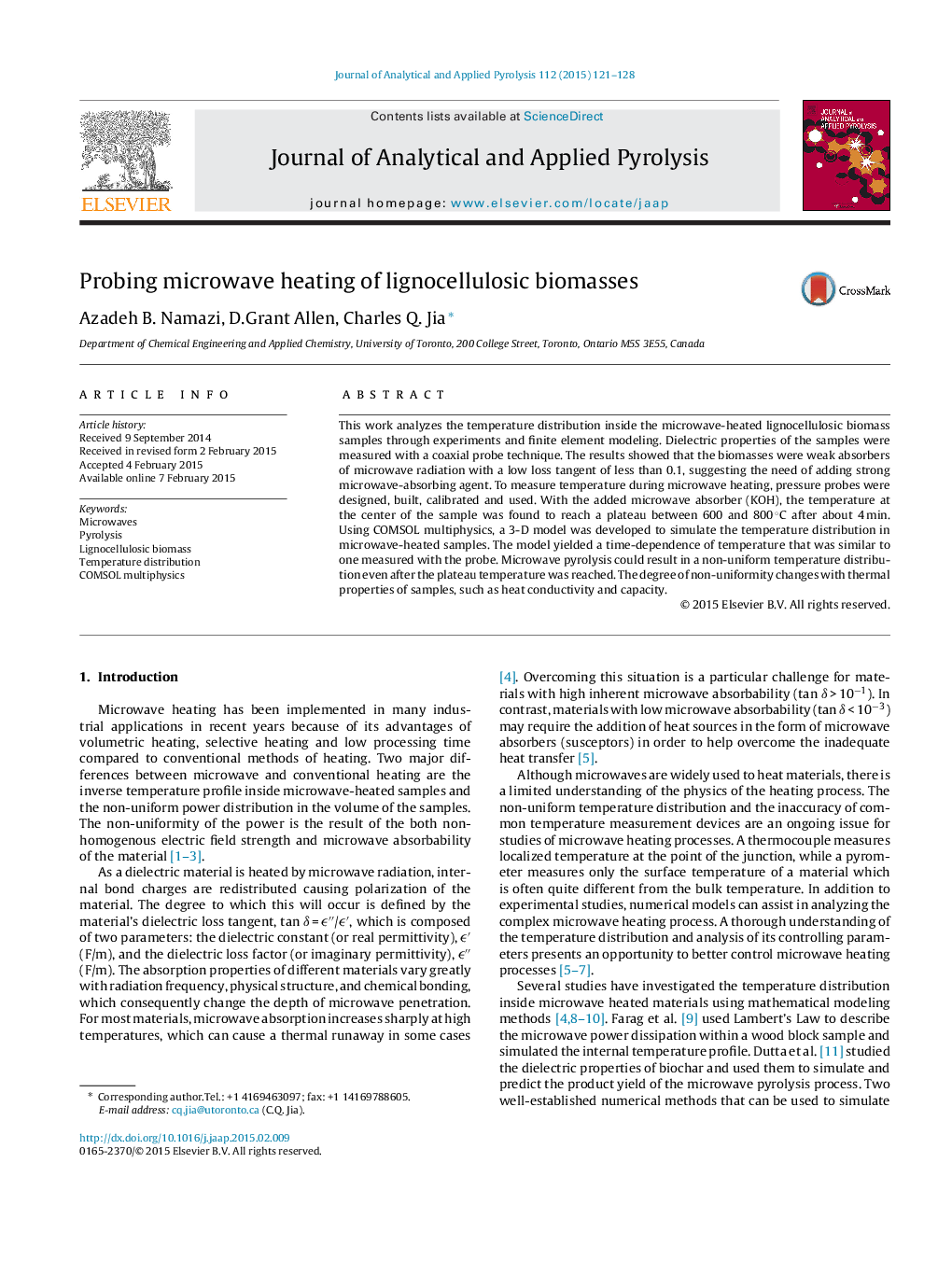| Article ID | Journal | Published Year | Pages | File Type |
|---|---|---|---|---|
| 1197225 | Journal of Analytical and Applied Pyrolysis | 2015 | 8 Pages |
•A pressure-based temperature probe is designed, constructed and used to measure sample temperatures during microwave heating.•Measured temperatures are in agreement with temperatures simulated with a 3-D model developed using COMSOL multiphysics 4.4.•The model also reveals that microwave-heated samples lack uniformity in temperature.
This work analyzes the temperature distribution inside the microwave-heated lignocellulosic biomass samples through experiments and finite element modeling. Dielectric properties of the samples were measured with a coaxial probe technique. The results showed that the biomasses were weak absorbers of microwave radiation with a low loss tangent of less than 0.1, suggesting the need of adding strong microwave-absorbing agent. To measure temperature during microwave heating, pressure probes were designed, built, calibrated and used. With the added microwave absorber (KOH), the temperature at the center of the sample was found to reach a plateau between 600 and 800 °C after about 4 min. Using COMSOL multiphysics, a 3-D model was developed to simulate the temperature distribution in microwave-heated samples. The model yielded a time-dependence of temperature that was similar to one measured with the probe. Microwave pyrolysis could result in a non-uniform temperature distribution even after the plateau temperature was reached. The degree of non-uniformity changes with thermal properties of samples, such as heat conductivity and capacity.
